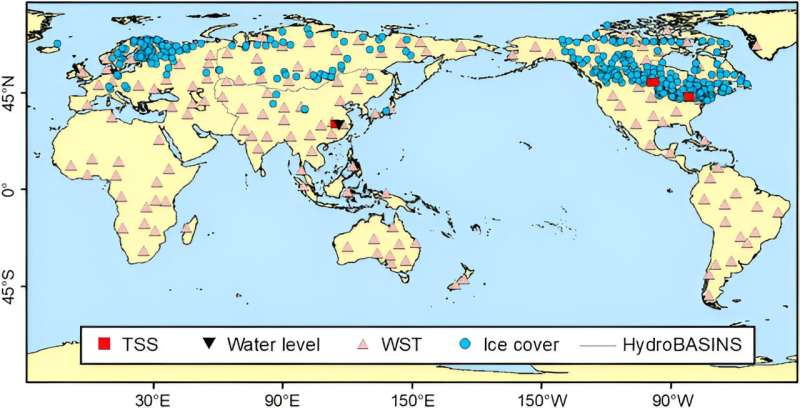
Unlocking clearer views of our world’s water: A Landsat legacy (Image Credit: Phys.org)

Satellite remote sensing is vital for monitoring marine and freshwater ecosystems, leveraging missions like SeaWiFS, MODIS, MERIS, Landsat, and Sentinel to track water parameters such as chlorophyll, sediment, and temperature. The dynamic nature of water bodies demands high-frequency observations for accuracy, with limitations highlighted by factors like clouds and sunlight.
Despite its longer revisit cycle, Landsat’s observations are invaluable for inland and coastal waters, emphasizing the need for more frequent data to monitor the dynamic changes in aquatic ecosystems effectively.
In a recent study published in the Journal of Remote Sensing, advancements in analyzing water environments via Landsat missions are revealed. For the first time, this research offers a global assessment of cloud-free observations (NCOs) from Landsat, emphasizing its critical contribution to environmental and hydrological studies, marking a significant leap in our capability to monitor and understand water bodies on a global scale.
The study embarked on an ambitious journey to unravel the intricacies of NCOs via the Landsat missions. By meticulously analyzing over 4.8 million Landsat images spanning from Landsat 5 through Landsat 8, they uncovered striking spatial and temporal variations in cloud-free data across the globe.
Their research illustrated Landsat-8’s superior performance, offering nearly double the mean annual NCOs compared to its predecessors. This leap in data quality is particularly pronounced in areas with orbital overlaps, especially above the 45°N latitude, where observation quality is significantly enhanced.
Furthermore, this work delves into the vital role of these overlaps in augmenting the quantity and quality of observations, presenting a game-changer in how we monitor and understand the dynamics of the Earth’s water environments.
The study’s lead researcher emphasized, “Our analysis not only showcases Landsat-8’s superior capability in providing nearly twice as many mean annual NCOs as its predecessors but also highlights the importance of adjacent orbit overlaps in improving observation quality, particularly above 45°N latitude.”
The findings hold profound implications for enhancing the accuracy of long-term environmental change detection and monitoring. By leveraging improved NCOs, researchers and policymakers can make more informed decisions, particularly in managing water resources and addressing ecological challenges.
More information:
Lian Feng et al, Quantifying Cloud-Free Observations from Landsat Missions: Implications for Water Environment Analysis, Journal of Remote Sensing (2024). DOI: 10.34133/remotesensing.0110
Provided by
Chinese Academy of Sciences
Unlocking clearer views of our world’s water: A Landsat legacy (2024, March 18)
retrieved 19 March 2024
from https://phys.org/news/2024-03-clearer-views-world-landsat-legacy.html
part may be reproduced without the written permission. The content is provided for information purposes only.





